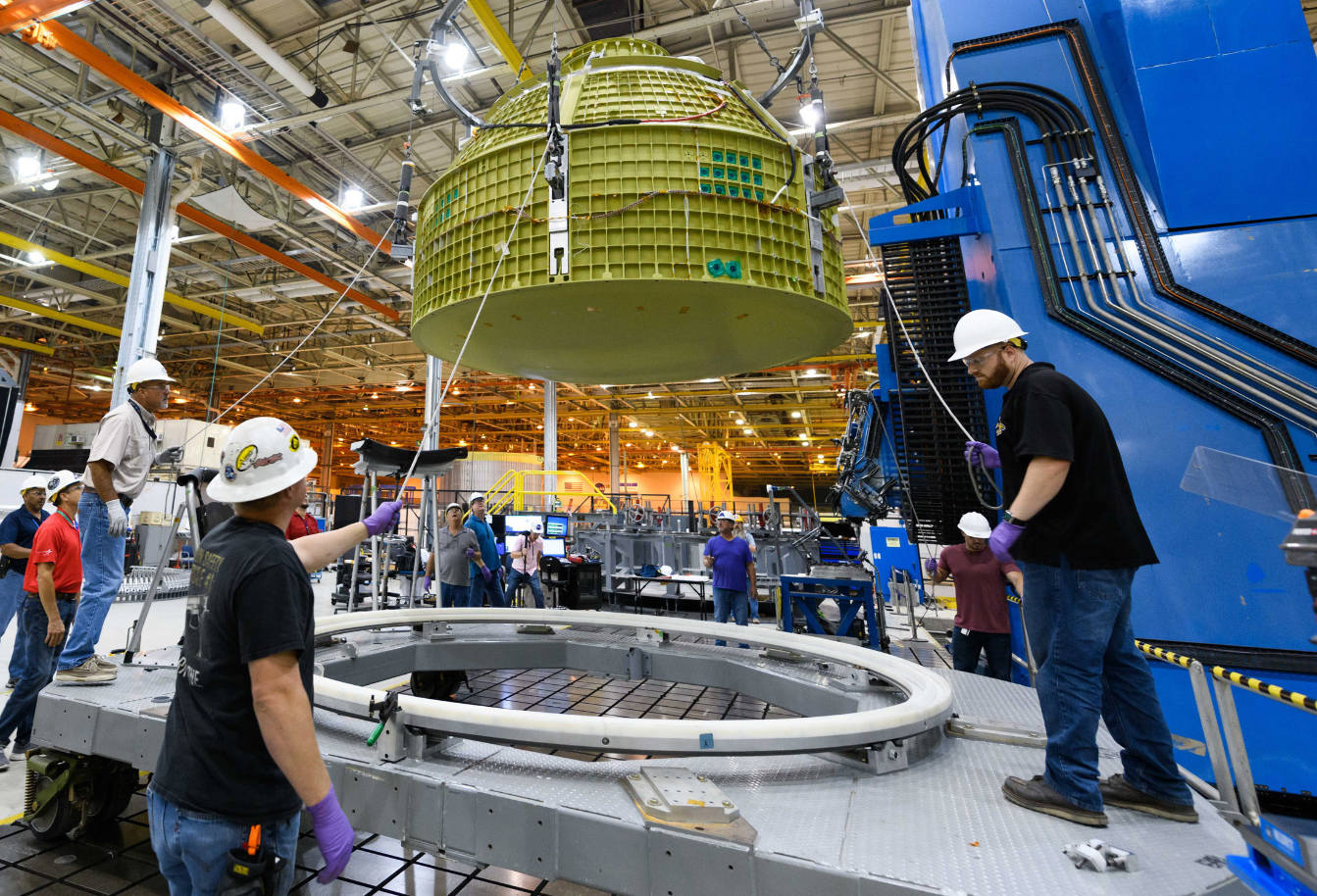Technicians have completed construction of the spacecraft capsule structure for NASA's Orion Exploration Mission-2 (EM-2) spacecraft.
Technicians have completed construction of the spacecraft capsule structure for NASA's Orion Exploration Mission-2 (EM-2) spacecraft. Orion, which will be launched by the future Space Launch Systems (SLS) heavylift rocket, is designed to take astronauts beyond low-Earth orbit for the first time since the end of the Apollo programme.
The EM-2 mission — planned for the early 2020s — will be the first flight of Orion with astronauts on board. It will be preceded by EM-1, in which an uncrewed Orion will venture thousands of miles beyond the Moon over the course of about three weeks. The EM-1 capsule was fitted with its heat shield in July.
The capsule structure, or pressure vessel, is Orion’s primary structure that holds the pressurized atmosphere astronauts will breathe and work in while in the vacuum of deep space. The main structure of the pressure vessel consists of seven large aluminum pieces that are welded together to produce a strong, yet light-weight, air-tight capsule.
The pieces were joined at the Michoud Assembly Facility near New Orleans by Lockheed Martin technicians using friction-stir welding, which transforms metals from a solid into a plastic-like state, and then uses a rotating pin tool to soften, stir and forge a bond between two metal components to form a uniform welded joint.
Airbus Defence and Space is building the European service module (ESM) for the Orion spacecraft. The module, which is installed underneath the crew module, provides propulsion, power and thermal control and will supply astronauts with water and oxygen on their missions beyond the Moon to more distant destinations such as Mars.

